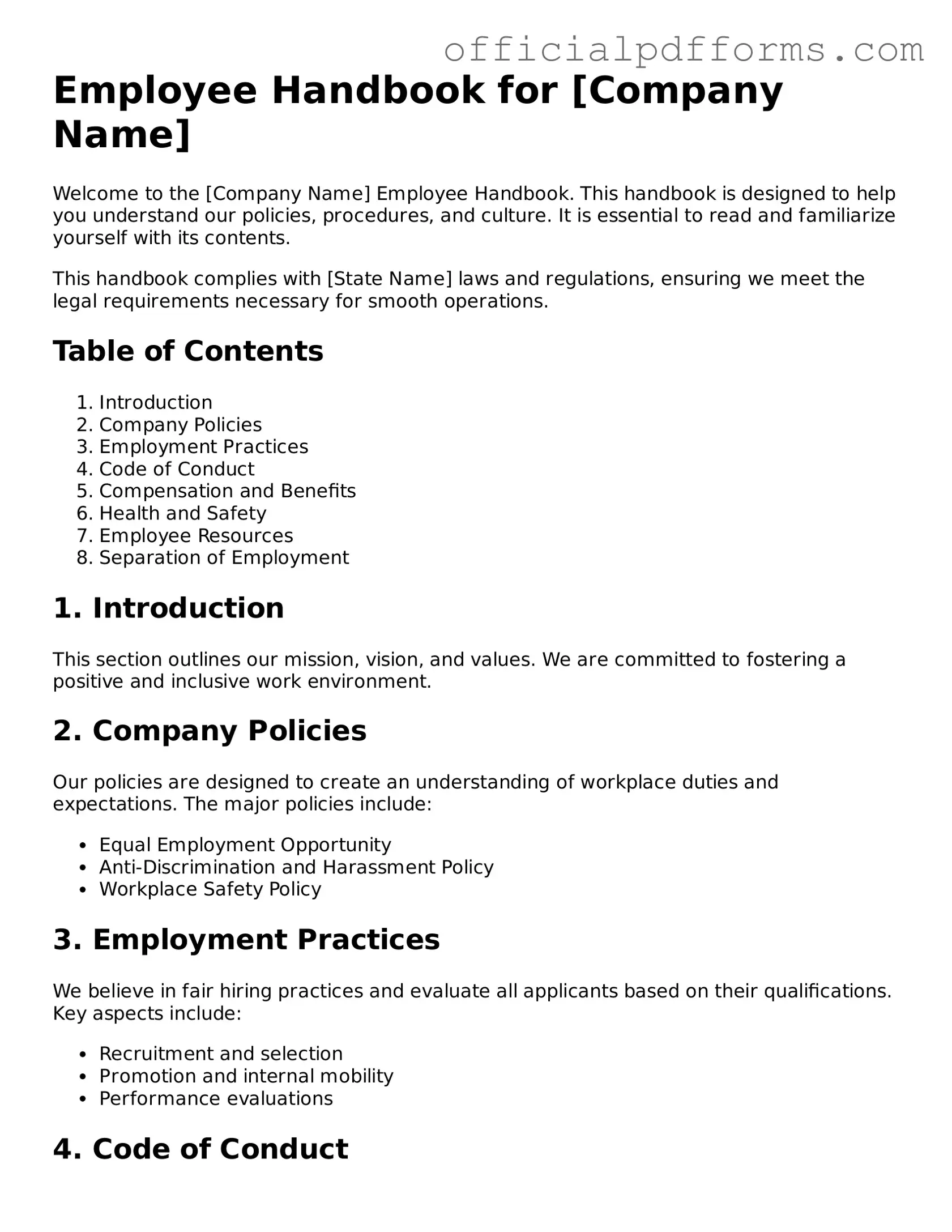What is the purpose of the Employee Handbook?
The Employee Handbook serves as a comprehensive guide for employees. It outlines company policies, procedures, and expectations. This document helps ensure that all employees understand their rights and responsibilities within the organization.
Who is required to read the Employee Handbook?
All employees, including full-time, part-time, and temporary staff, are required to read the Employee Handbook. Familiarity with its content is essential for understanding workplace policies and procedures.
How often is the Employee Handbook updated?
The Employee Handbook is reviewed annually. Updates may occur as needed to reflect changes in laws, regulations, or company policies. Employees will be notified of any significant changes.
What should I do if I have questions about the Employee Handbook?
If you have questions, reach out to your supervisor or the Human Resources department. They can provide clarification and further information regarding any aspect of the handbook.
Is the Employee Handbook legally binding?
The Employee Handbook is not a legally binding contract. It serves as a guideline for workplace behavior and policies. However, adherence to its content is expected from all employees.
Can the company change the policies in the Employee Handbook?
Yes, the company reserves the right to change policies outlined in the Employee Handbook. Employees will be informed of any changes, and the updated handbook will be made available.
What happens if I do not sign the acknowledgment of receipt for the Employee Handbook?
Failure to sign the acknowledgment does not exempt employees from adhering to the policies in the handbook. It is important to understand that all employees are expected to follow the guidelines regardless of the acknowledgment.
Yes, employees should pay special attention to the following policies:
-
Code of Conduct
-
Attendance and Punctuality
-
Harassment and Discrimination
-
Leave of Absence
Understanding these policies is crucial for maintaining a respectful and productive work environment.
How can I obtain a copy of the Employee Handbook?
A copy of the Employee Handbook is available through the Human Resources department. Employees can request a physical or digital copy at any time.
What if I disagree with a policy in the Employee Handbook?
If you disagree with a policy, it is important to discuss your concerns with your supervisor or HR. Open communication can help address any issues and foster a better understanding of company policies.
